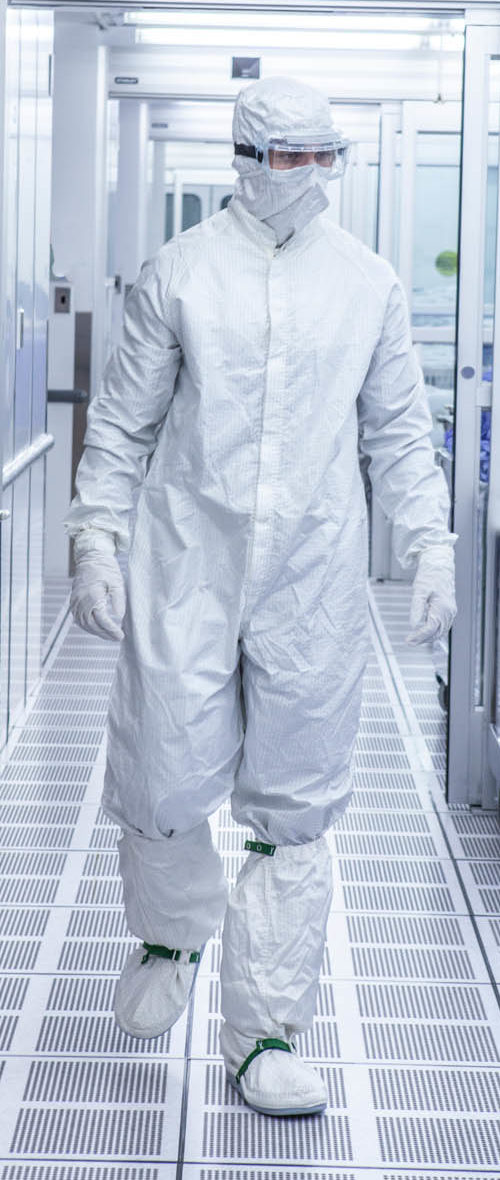ASEPTIC ENVIRONMENT: NONVIABLE VS VIABLE MONITORING
Any contamination poses a risk to the contents of the cleanroom and, in some industries, is a threat to the end-user or product.
What Is An Aseptic Environment?
Aseptic is defined as being “free from contamination caused by harmful bacteria, viruses, or other microorganisms.
Cleanrooms are carefully maintained and monitored to keep out contamination. They are also carefully calibrated to keep certain temperatures, air pressures, humidity, and more.
Cleanrooms are used for research, manufacturing, and more in a number of industries. From pharmaceuticals to tech, cleanrooms are an important environment that protects the contents.
Contamination does not only pose a threat to the product, but also to the end user. Not only are we monitoring for contamination, but also prevent contaminants from growing.
Nonviable Particles
Nonviable particles are non-living particulate matter. This includes dust, skin cells, clothing particles, pollen, and more. This type of contamination does not grow or spread; however, it still poses a serious threat to an aseptic environment.
Nonviable Particle Monitoring
Particle monitoring automatically detects nonviable particles. Particle monitors use a technique called light scattering to detect the number and size of particles. A particle passes through a laser beam, and a photodetector is used to detect the change in the light. The particle casts a shadow, and the particle counter uses that shadow to determine the size and number of particles.
Because the particle counter is measuring and quantifying the particles, not looking at their cellular makeup, it cannot tell the difference between a nonviable and viable particle. These two types of contamination are fundamentally different, so they need to be measured differently.
Viable Particles
Viable particles are live microorganisms. These can include yeast, bacteria, mold, fungi, and more. Not only are these contaminants dangerous to an aseptic environment because they are general contamination, but they have the potential to grow.
It may affect the sterility of the pharmaceutical product. As they can germinate, viable particles can be monitored by capturing, colonizing, and counting them. The two methods involved in monitoring viable particles are settled plates and air samplers.
- Settled plates – These measures the microorganisms that settle on a particular surface area over a given period of time from the air. After the collection, the plates can be incubated to facilitate the growth of the microorganisms. By counting the number of colonies formed over the surface area, the density of microorganisms within the cleanroom environment can be calculated.
- Air sampler – It collects microorganisms in the air by impaction and delivers them onto a plate. The microorganism count is given by the number of colony-forming units per cubic meter (cfu/m3).
SOP on Viable Particulate Monitoring – MLT Testing
- Objective
To lay down the procedure for Viable Particulate Monitoring – MLT Testing and Other Areas – Microbiology.
- Scope
This SOP is applicable for Viable Particulate Monitoring in MLT Testing and Other Areas of Microbiology lab (Pharmaceutical Company Name).
- Responsibility
- Chemist or above of Microbiology Laboratory.
- Head – Microbiology Section.
- Accountability
- Head – Quality Control.
- Head – Quality Assurance.
- Abbreviations and Definitions
SOP : Standard operating procedure
No. : Number
QC : Quality Control
QA : Quality Assurance
- Procedure
- Viable particle monitoring in MLT Testing and Other Areas shall be performed by microbiologist, to ensure that the environmental conditions are in compliance with respect to the acceptable levels of total viable count.
- Perform the viable particle monitoring in MLT testing and sub-culturing areas by following methods and frequency.
- Settle Plates (Passive air sampling) —– Daily and once in a week if there is no activity.
- Volumetric Air Sampling (Active air sampling by sieve impaction method) –Weekly once.
- Perform the viable particle monitoring in sterilization, media preparation and other areas by Settle Plate once in a week.
- Preparation of plates and other accessories:
- Prepare and sterilize required number of SCDA (Soyabean Casein Digest agar Medium) plates / cassettes and pre-incubate as per SOP on sterile media preparation (SOP No. :).
- Sterilize required number of SS carriers required to carry plates / cassettes.
- Disinfect the outer surfaces of the medium plates / cassettes with 1% Protasan DS / 1% Combatan / 1% Triple 100 and place them in the sterile SS carriers.
- Carry the plates to the area to be monitored.
- Take out the plates from the SS bin and start the monitoring using the procedures mentioned below.
- Settle Plates exposure (Passive air sampling):
- Expose the agar medium plates in the specified area according to the pre-defined locations and settle plate exposure schematic diagrams mentioned in the annexure.
- Exposure method.
- Bring each plate to the pre-defined locations.
- Open the lid of plate carefully.
- Place the plate containing medium in the location. Place the plate on the settle plate exposure stand if it is provided for that location.
- Place the lid beside this plate internal side down.
- Expose the plate for 4 hours.
- After completion of exposure time, close the medium plate with lid carefully.
- Label each plate on bottom side with location code, date of exposure, media Lot No, and date of media preparation.
- Place all the plates in SS carriers.
- Perform the monitoring by settle plates under dynamic conditions if activity is there or once in a week if there is no activity.
- Volumetric Air Sampling (Active air sampling by sieve impaction method):
- Perform the volumetric air sampling in the area (1000 litres / Location) as per the pre-defined locations and volumetric air sampling schematic diagrams mentioned in the annexure.
- Perform Air sampling with sieve impaction Air Sampler, as per SOP On Operation, Calibration, Cleaning and Maintenance of M Air T Air Sampler (SOP No.:).
- Disinfect the sieve after sampling of every location.
- Perform the volumetric air sampling starting from high clean area location to low clean area location sequentially.
- After completion of volumetric air sampling, label each plate on bottom side with location code, shift, sign (initial) and date.
- Place all the plates in SS carriers.
- Perform the monitoring by volumetric air sampling under dynamic conditions once in a week.
- Bring all the plates / cassette carriers to incubators room for incubation.
- Incubation:
- Incubate all plates / cassettes of environmental monitoring and personnel monitoring test at 20-25 0C for 72 hours and at 30-35 0C for further 48 hours. Observe the plates / cassettes after 72 hours and after further 48 hours and record the results in respective report given as annexures.
- Documentation
- Record the test details of settling plate exposure for MLT testing and sub-culturing area in the report given as Annexure No.: (Format No. :).
- Record the test details of Volumetric Air sampling for MLT testing and sub-culturing area and in the report given as Annexure No. 🙁 Format No. :).
- Record the test details of settling plate exposure for sterilization, media preparation and other areas in the report given as Annexure No.: (Format No. :).
- Acceptable levels:
- Verify that the monitoring results are within the acceptable levels mentioned in the particular annexure.
- Forms and Records (Annexures)
- Report of Viable Particles Monitoring by Settle Plate Method-MLT areas
- Report of Viable Particles Monitoring by Volumetric Air Sampling-MLT areas
- Report of Viable Particles Monitoring by Settle Plate Method-Other areas.
- Distribution
- Master copy – Quality Assurance
- Controlled copies – Quality Assurance, Production, Quality Control, Stores, Engineering and Human Resource
- History:
| Date | Revision Number |
Reason for Revision |
| 00 | NEW SOP |
For More Pharma Updates Visit –https://pharmaguidances.com


